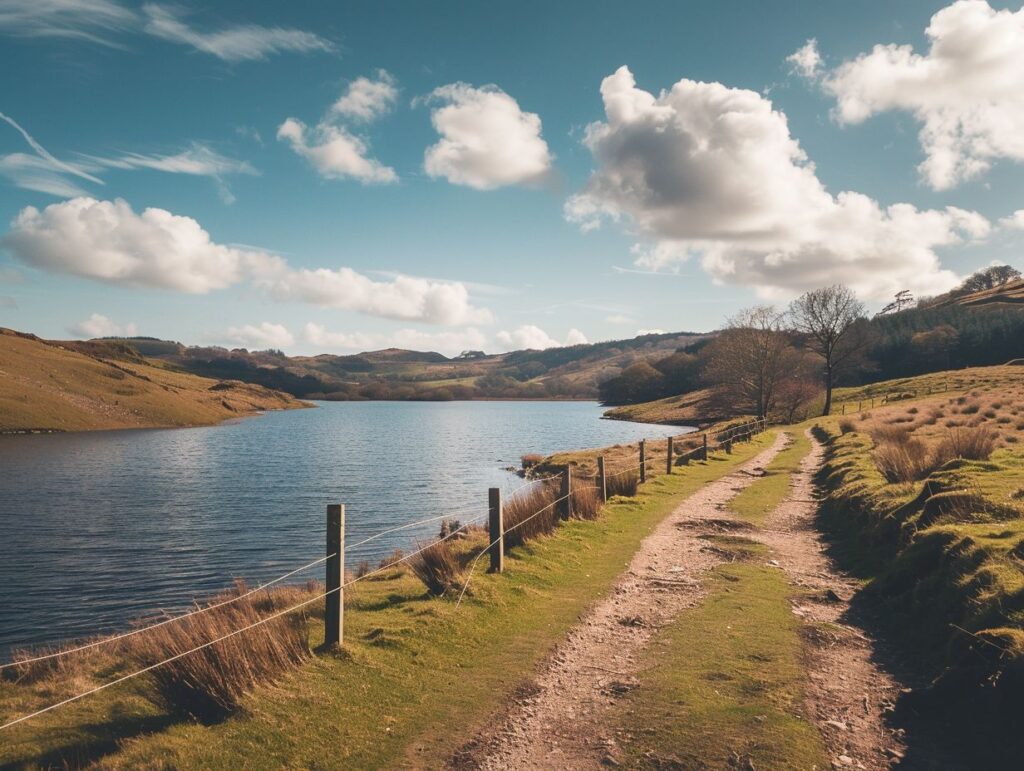Are you looking to embark on an exciting hiking adventure surrounded by stunning lakes and reservoirs in the UK? Before you hit the trails, there are some key factors to consider such as difficulty level, distance, scenery, and accessibility.
We explore the top hiking trails in the UK that offer breathtaking views of lakes and reservoirs, including The Lake District National Park, Loch Lomond, and The Trossachs National Park. We provide essential tips to ensure a safe and enjoyable hiking experience.
So grab your gear, lace up your boots, and let’s explore the great outdoors together!
Key Takeaways:
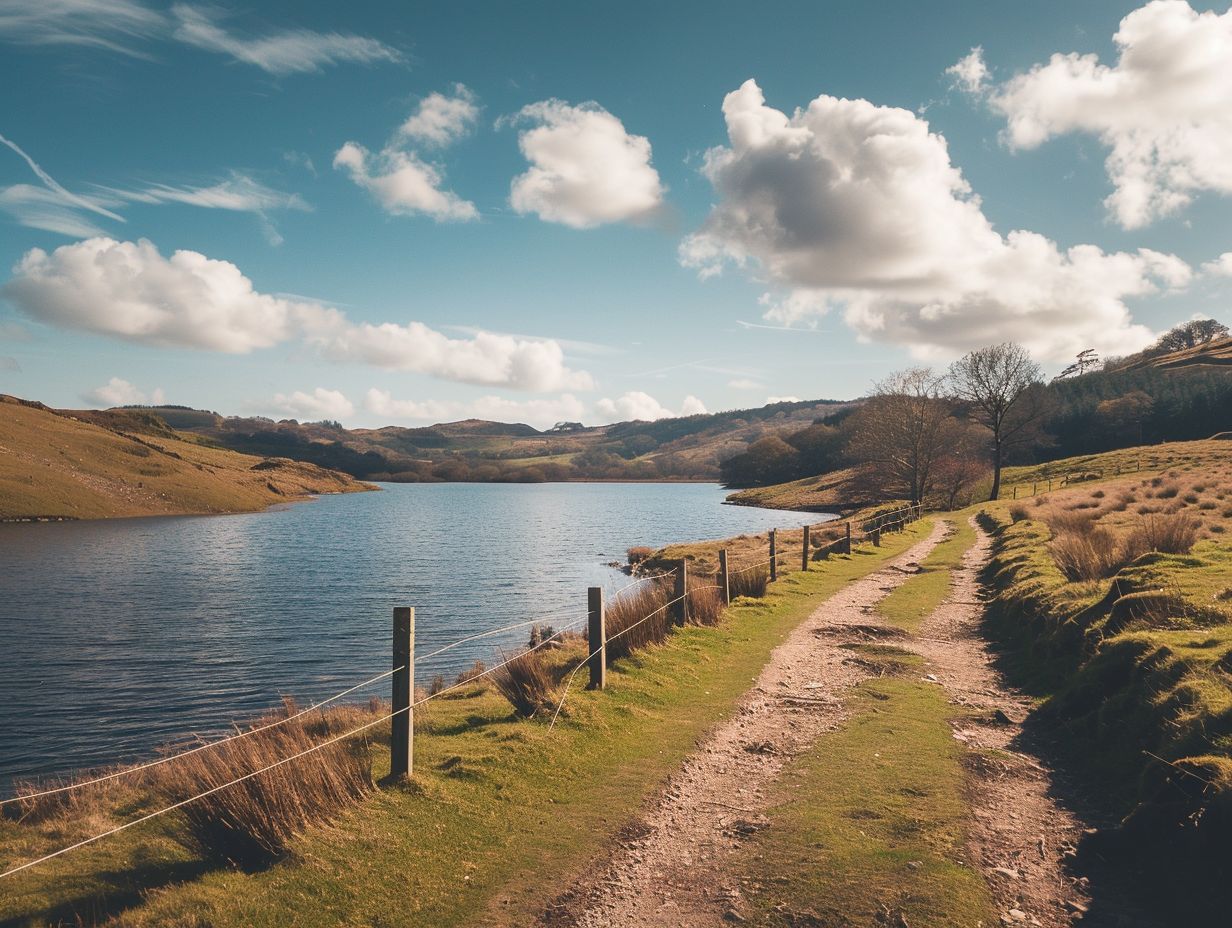
- The UK offers a variety of hiking trails for experiencing lakes and reservoirs, from the popular Lake District National Park to the lesser known Cairngorms National Park.
- When choosing a hiking trail, consider the difficulty level, distance and duration, scenery and views, as well as accessibility and facilities available.
- Before heading out, be sure to check for permits and restrictions, pack proper gear and supplies, and be aware of potential wildlife and safety hazards. Remember to leave no trace when exploring these beautiful landscapes.
Choosing a hiking trail involves several important factors to ensure a safe and enjoyable experience, especially in diverse and scenic locations like the Lake District.
1. Difficulty Level
When choosing a hiking trail, it is essential to carefully assess the level of difficulty to align with one’s fitness and experience, particularly in demanding terrains such as Scafell Pike in the Lake District.
For novice hikers, it is advisable to commence with easier walks to enhance endurance and become acquainted with the surroundings. Intermediate hikers would benefit from moderate trails that offer diverse terrain, providing a suitable challenge. Experts such as Huw Saunders advocate for a gradual increase in difficulty levels, incorporating aspects like elevation gains and extended distances.
Individuals aspiring for a challenging ascent like Scafell Pike should engage in rigorous training regimes that encompass both strength and endurance workouts. Furthermore, it is recommended to consistently monitor weather conditions, carry essential items such as water, snacks, and navigation tools, and inform a trusted individual of the planned hiking route for safety precautions.
2. Distance and Duration
It is imperative to consider the distance and duration of a hike to ensure that the trail can be completed within the available time and energy levels.
For instance, a brief stroll around Ullswater may only require an hour or two, while a full-day hike in the Lake District could encompass a 10-15 mile journey that consumes a significant portion of the day. To gauge the expected duration of a hike, factors such as the terrain, elevation gain, and individual fitness level must be taken into account. As a general guideline, a moderate walking pace is typically estimated at 2-3 miles per hour.
Strategic planning of breaks is essential to prevent exhaustion; it is recommended to schedule brief intervals every hour and include a longer break for lunch. Efficient time management ensures that the hiking experience is enjoyable and avoids any sense of being rushed.
3. Scenery and Views
One of the most gratifying aspects of hiking is the opportunity it presents to appreciate awe-inspiring scenery and vistas, such as those in the vicinity of Derwentwater and Buttermere.
These trails offer an ideal fusion of serene lakeside beauty and rugged mountain panoramas. For individuals in search of tranquil waters mirroring the skies above, paths like Llyn y Fan Fach in the Brecon Beacons National Park present remarkable views that are bound to make a lasting impression. If the allure of ascending to greater altitudes for expansive views appeals to you, then trails such as Snowdonia’s Glyderau Range may better align with your preferences. Irrespective of your inclinations, it is advisable to have a camera at hand to immortalise these enchanting moments, creating a treasury of memories to cherish for a lifetime.
4. Accessibility and Facilities
Considering accessibility and available facilities is crucial when planning a hiking trip, as it ensures the availability of necessary amenities both before, during, and after the hike.
It is imperative to conduct thorough research on the accessibility of starting points like Glenridding and Keswick, as they offer various facilities to meet the needs of hikers. Glenridding, for example, provides extensive parking spaces, convenient toilet facilities, and multiple refreshment points for hikers to replenish their energy. Conversely, Keswick also offers similar amenities, including designated parking areas, well-maintained toilets, and cafes for quick refreshments.
Proper planning, such as reviewing online maps or contacting local tourism boards, can assist in making well-informed decisions regarding the choice of starting point, thereby ensuring a seamless and enjoyable hiking experience.
Top Hiking Trails in the UK for Lakes and Reservoirs
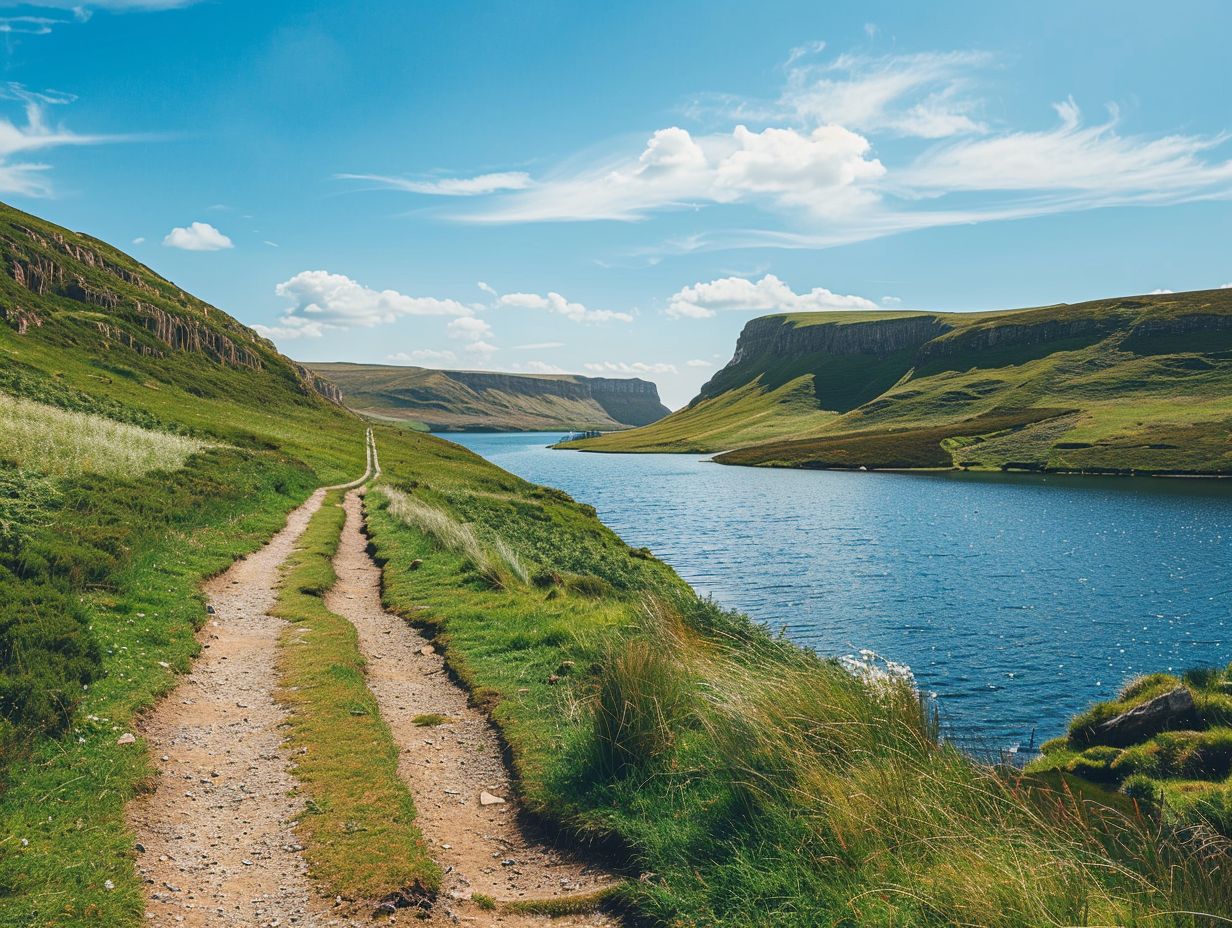
The United Kingdom features a variety of impressive hiking trails that wind around lakes and reservoirs, offering hikers diverse and captivating landscapes enhanced by peaceful water views.
1. The Lake District National Park
The Lake District National Park is renowned as a prime hiking destination in the UK, boasting picturesque villages like Ambleside and iconic hiking spots such as Buttermere and Catbells.
Featuring a diverse range of trails suitable for hikers of all levels, the Lake District provides options to cater to varying preferences.
Whether individuals seek leisurely walks around tranquil lakes or challenging ascents of rugged peaks, adventurers can select routes that align with their desired experience. Noteworthy trails like the Buttermere Circular Walk and the Catbells ascent offer awe-inspiring views of the surrounding landscapes.
An advantageous aspect is the accessibility of many of these trails from towns like Ambleside, facilitating convenient exploration of the region’s scenic beauty for visitors.
2. The Peak District National Park
The Peak District National Park, specifically the vicinity surrounding the Derwent Valley Reservoirs in Derbyshire, presents an array of picturesque hiking opportunities overseen by the National Trust. These reservoirs—Ladybower, Howden, and Derwent—offer not only scenic beauty but also serve as vital water sources for the local area.
The National Trust plays a pivotal role in the upkeep of these trails, ensuring their accessibility and preservation for the enjoyment of hikers. Renowned paths like the Derwent Edge walk provide breathtaking views of the nearby landscape, allowing for wildlife observation including mountain hares and red grouse.
Hikers can anticipate encounters with historical landmarks such as the medieval packhorse bridge at Slippery Stones and the poignant memorial marking the crash site of a WWII aircraft.
3. Loch Lomond and The Trossachs National Park
The renowned Loch Lomond and The Trossachs National Park, situated in the Scottish Highlands, is celebrated for its breathtaking landscapes and diverse hiking trails. From leisurely strolls along the serene shores of Loch Lomond to demanding mountain ascents that offer sweeping views of the adjacent hills, this national park caters to hikers of varying skill levels.
The assortment of trails meanders through ancient woodlands, past cascading waterfalls, and leads to rugged peaks, providing an immersive encounter with Scotland’s natural splendour.
For an enhanced experience of The Trossachs, individuals may wish to partake in a boat excursion on Loch Katrine or indulge in a tranquil picnic at one of the idyllic loch-side locations.
4. Snowdonia National Park
Snowdonia National Park, located in Mid-Wales, is widely recognised for its striking landscapes and challenging hiking routes. The park boasts peaks that soar above 3,000 feet, offering a variety of hiking opportunities suitable for individuals of all skill levels.
Ranging from serene walks along scenic lakeshores to demanding ascents to mountain summits, Snowdonia accommodates adventurers with varying levels of experience.
Noteworthy among its attributes is the diverse landscape of rocky inclines, verdant valleys, and cascading water features. For individuals preparing to embark on a hike in this dynamic setting, it is imperative to equip oneself with sturdy footwear, an ample supply of water, and clothing layers to accommodate fluctuating weather patterns.
Acquainting oneself with trail maps and staying abreast of weather forecasts are essential components for optimising the Snowdonia hiking experience.
5. The Brecon Beacons National Park
The Brecon Beacons National Park, which encompasses the picturesque Llyn y fan fach, stands as an essential destination for hiking enthusiasts seeking to immerse themselves in the natural splendour of Wales.
Within this enchanting terrain lies a diverse array of hiking paths tailored to accommodate individuals of varying skill levels, ranging from leisurely walks to demanding climbs. The National Trust assumes a fundamental role in safeguarding these pathways to ensure that visitors can savour the magnificent views without causing harm to the environment.
Strategically positioned information stations along the trails furnish visitors with comprehensive insights into the region’s flora, fauna, and historical significance, thereby enriching the overall hiking experience.
Llyny fan fach, characterised by its serene waters mirroring the adjacent peaks, stands as a favoured destination that encapsulates the quintessence of the Brecon Beacons’ rugged magnificence.
6. The Cairngorms National Park
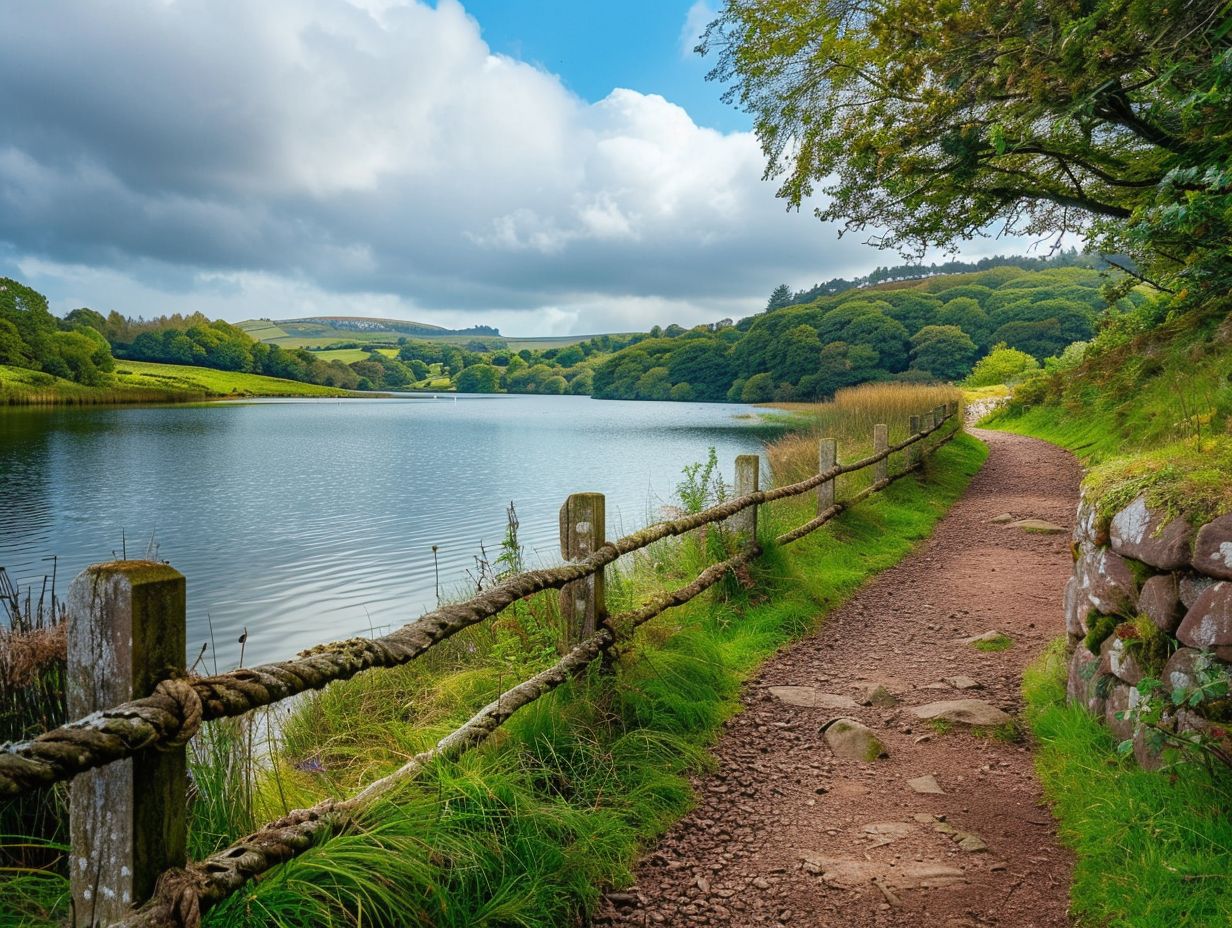
The Cairngorms National Park, situated in the Scottish Highlands, is renowned for its vast wilderness and challenging hiking trails. Offering a diverse range of hiking opportunities, the Cairngorms cater to individuals of all levels of experience, from tranquil walks along scenic lochs to demanding climbs up rugged peaks.
The park boasts a rich variety of flora and fauna, including rare mountain vegetation like dwarf willow and juniper, as well as distinctive wildlife such as red deer and ptarmigan.
Ahead of embarking on a hike in this remote and rugged terrain, it is imperative to equip oneself with suitable attire, supplies, and navigation equipment. Ensuring one is well-informed of the prevailing weather conditions and notifying others of the hiking itinerary are essential practices for ensuring safety within the wilderness.
Tips for Hiking Around Lakes and Reservoirs
Trekking in the vicinity of lakes and reservoirs, such as those situated in the Lake District or Loch Ness, necessitates careful deliberation to ensure both safety and overall satisfaction.
1. Check for Permits and Restrictions
Ahead of embarking on any hiking expedition, it is imperative to conduct a thorough check for obligatory permits and restrictions, particularly in territories under the jurisdiction of entities such as the National Trust. These permits serve not only to safeguard the environment and conserve the natural aesthetics of the region but also to ensure the safety of hikers.
Notably, locations like the Brecon Beacons have implemented specific regulations to manage foot traffic and prevent overcrowding. By acquainting themselves with these stipulations, hikers can evade penalties, mitigate disturbances to wildlife, and enhance their overall hiking experience.
Valuable resources like official park websites, visitor centres, or local ranger stations can offer current information on permits, trail closures, and any other restrictions that may be enforced.
2. Pack Proper Gear and Supplies
It is imperative to ensure that the necessary gear and supplies are packed for a safe and comfortable hiking experience, which includes durable footwear with adequate ankle support. Proper footwear plays a critical role in preventing blisters and offering stability on varied terrains.
Additionally, carrying a sufficient amount of water is essential to maintain hydration levels during the journey, particularly in areas surrounding lakes and reservoirs where access to clean water may be limited.
Moreover, packing nutritious snacks and meals serves to not only nourish the body but also provide the necessary energy for the hike.
Furthermore, navigation tools such as a map, compass, or GPS are critical for remaining on course and guaranteeing a successful hiking expedition.
3. Be Aware of Wildlife and Safety Hazards
Having a good understanding of the local wildlife and potential safety hazards is essential for ensuring a safe and enjoyable hiking experience, particularly in locations such as Dodd Wood near Keswick.
While exploring the wooded pathways of Dodd Wood, it is important to remain vigilant for common wildlife sightings, including red squirrels, birds of prey, and deer. These animals contribute to the picturesque charm of the hike, but it is crucial to maintain a safe distance to prevent any disturbances.
Given the presence of slippery paths and the possibility of unpredictable weather conditions, it is advisable to wear appropriate footwear with reliable traction and to carry additional layers to accommodate changing weather patterns. Demonstrating respect for the environment involves adhering to designated trails and refraining from feeding or approaching wild animals.
4. Leave No Trace
Adherence to the Leave No Trace principles is imperative for the conservation of the natural allure and ecological equilibrium of hiking locales such as Lake Vyrnwy. These principles underscore the significance of minimising human impact on the environment while partaking in outdoor pursuits.
One of the fundamental tenets involves the responsible disposal of all waste to uphold the cleanliness of trails and their environs. Furthermore, remaining on designated paths serves to safeguard delicate ecosystems and mitigate soil erosion.
Entities like the National Trust play a pivotal role in advancing these principles and enlightening the populace on the importance of conscientious outdoor conduct. By adhering to these guidelines, hikers can contribute to preserving the pristine nature of these captivating landscapes for the enjoyment of forthcoming generations.
Frequently Asked Questions
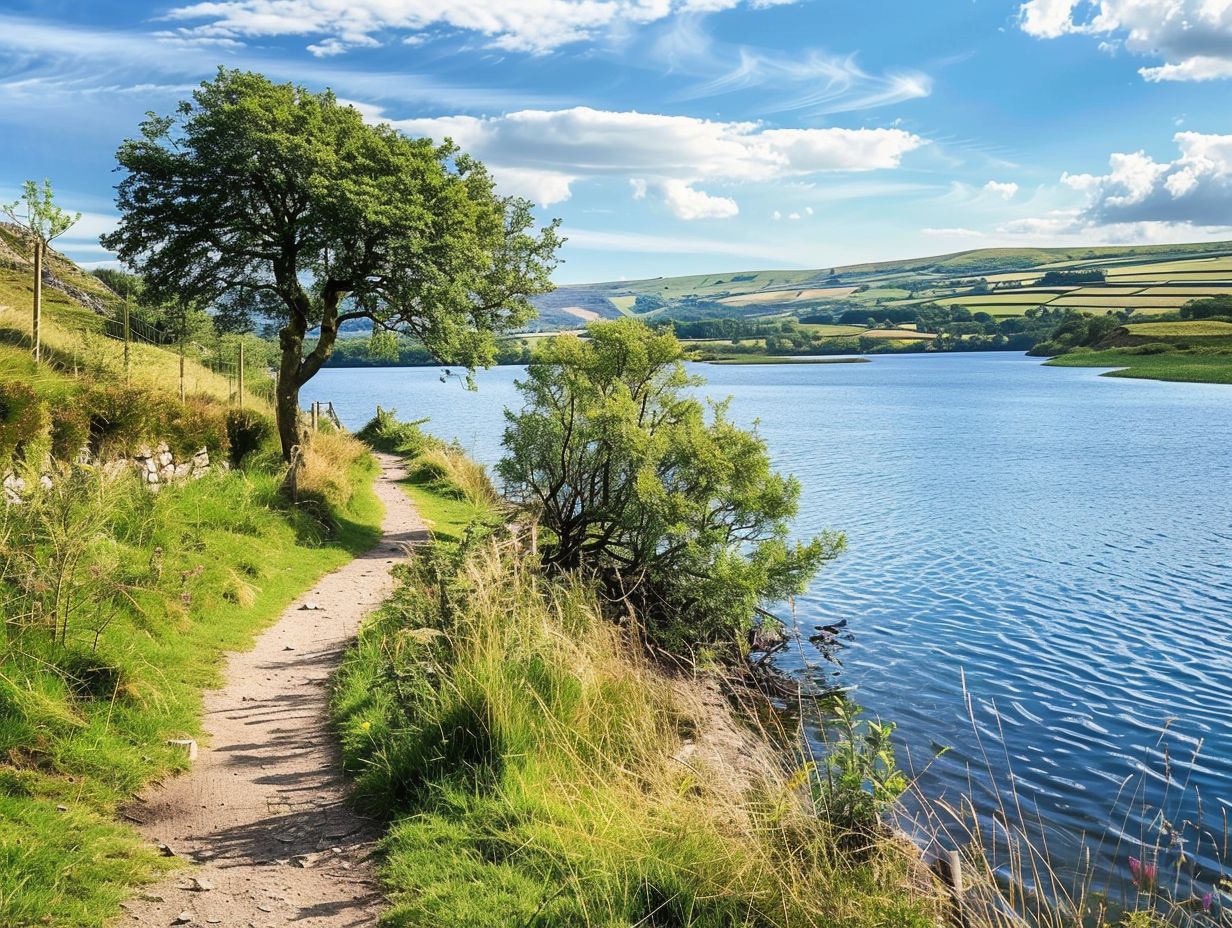 $
$
What are some of the best UK hiking trails for experiencing lakes and reservoirs?
Some of the best UK hiking trails for experiencing lakes and reservoirs include the Lake District National Park in Cumbria, the Brecon Beacons National Park in Wales, and the Loch Lomond and the Trossachs National Park in Scotland.
Do these hiking trails offer scenic views of the lakes and reservoirs?
Yes, these hiking trails offer stunning views of the lakes and reservoirs. The Lake District National Park, for example, is known for its picturesque lakes, including Windermere, Derwentwater, and Ullswater.
Are these hiking trails suitable for all levels of hikers?
Yes, these hiking trails offer a variety of routes that cater to different levels of hikers. From easy and short walks to more challenging and longer hikes, there is something for everyone to enjoy.
Are there any specific hiking trails that are ideal for families?
Yes, there are several hiking trails in the UK that are perfect for families. For example, the Cat Bells hike in the Lake District and the Llyn Cwm Llwch trail in the Brecon Beacons offer easy, family-friendly routes with beautiful lake views.
Are there any camping options available along these hiking trails?
Yes, many of these hiking trails offer camping options for hikers. Some of the campsites are situated near the lakes and reservoirs, providing a unique and scenic camping experience.
What is the best time of year to hike these trails for experiencing lakes and reservoirs?
The best time to hike these trails is during the summer months, from June to August, when the weather is pleasant, and the lakes and reservoirs are at their fullest. However, some hikers also enjoy the colours of autumn and the peacefulness of winter hikes in these areas.

